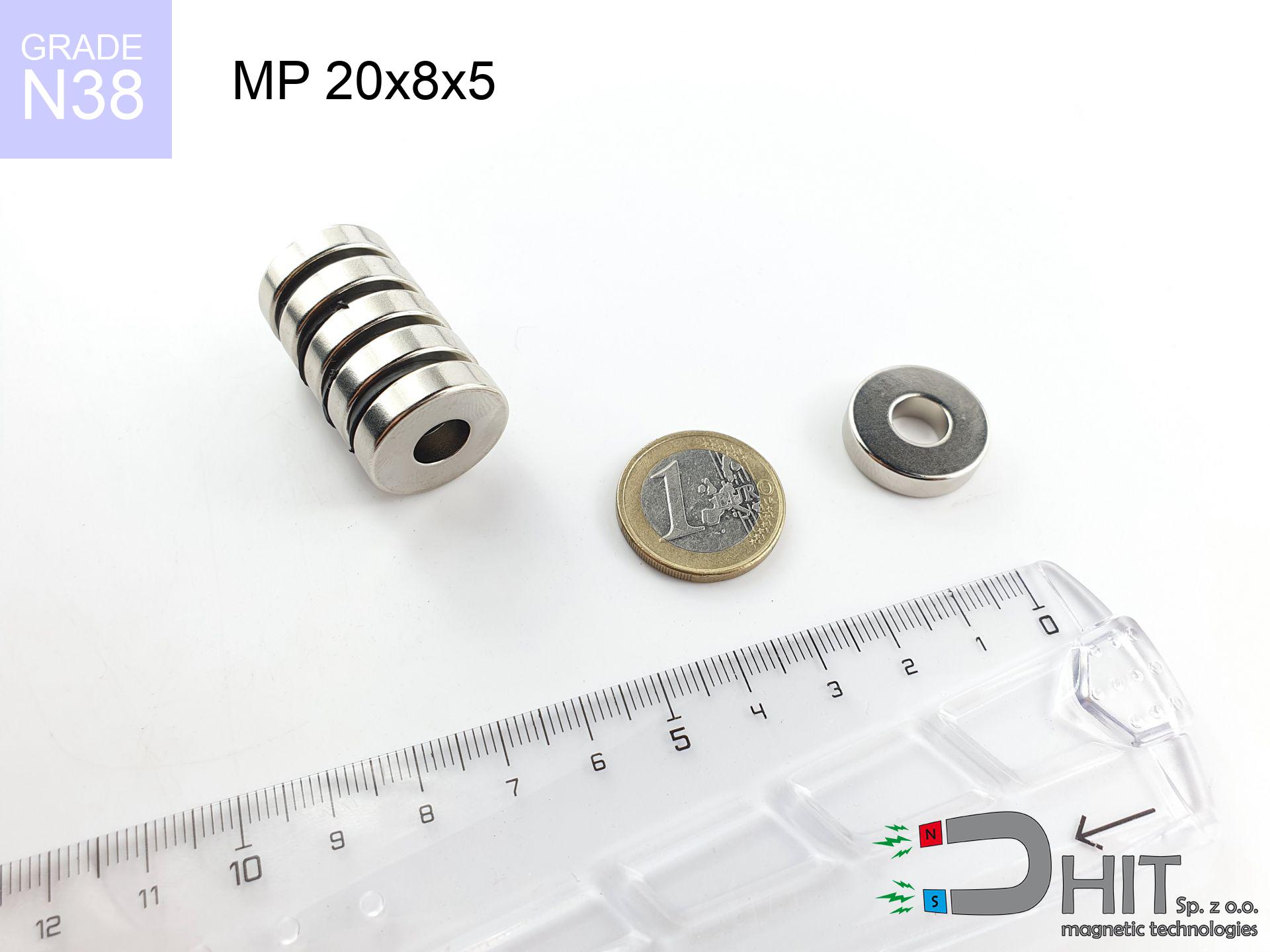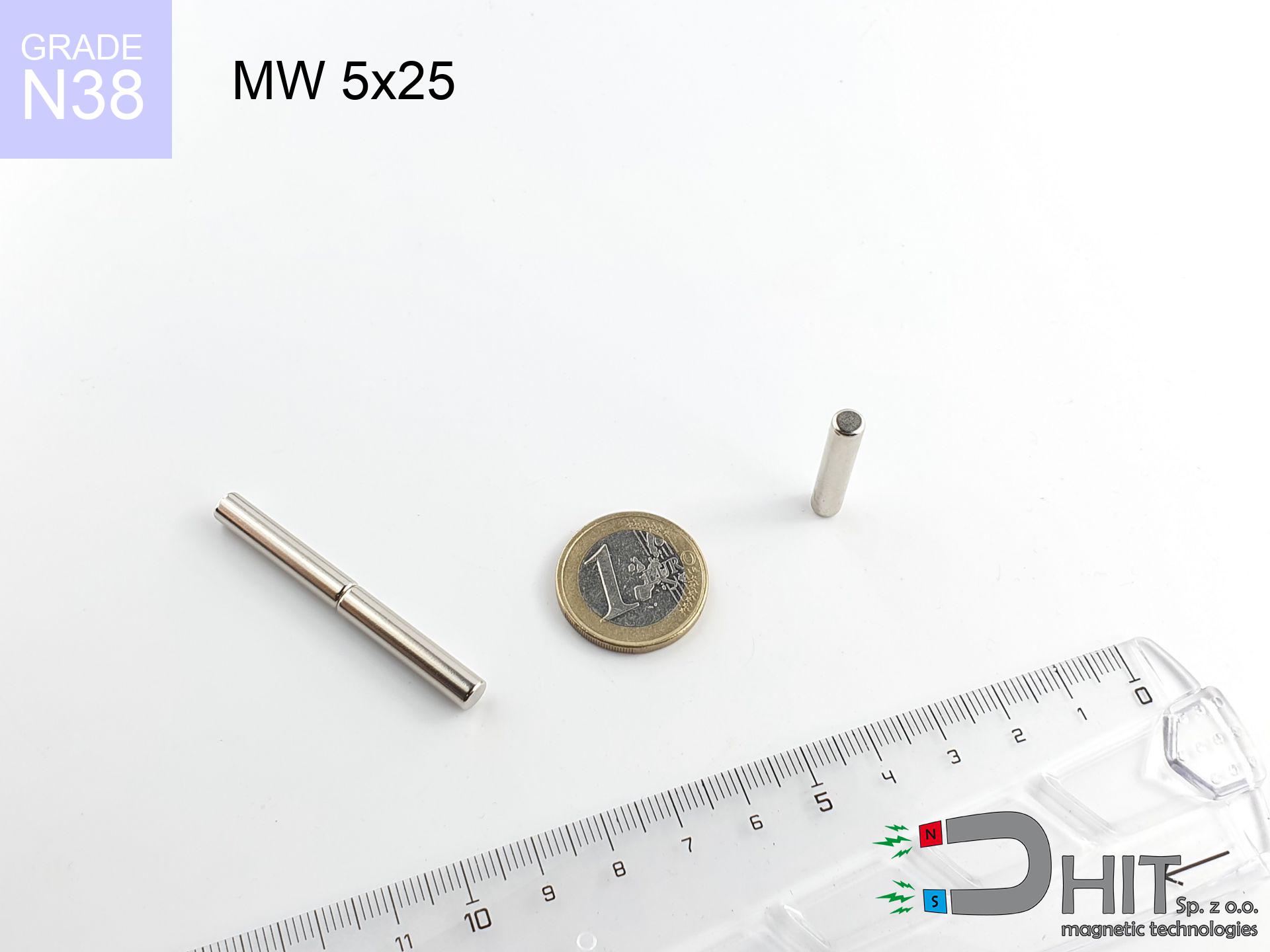MPL 10x7x3 / N38 - lamellar magnet
lamellar magnet
Catalog no 020115
GTIN: 5906301811213
length [±0,1 mm]
10 mm
Width [±0,1 mm]
7 mm
Height [±0,1 mm]
3 mm
Weight
1.58 g
Magnetization Direction
↑ axial
Load capacity
1.98 kg / 19.42 N
Magnetic Induction
339.79 mT
Coating
[NiCuNi] nickel
0.849 ZŁ with VAT / pcs + price for transport
0.690 ZŁ net + 23% VAT / pcs
bulk discounts:
Need more?Hunting for a discount?
Contact us by phone
+48 888 99 98 98
or let us know through
inquiry form
through our site.
Force as well as structure of a neodymium magnet can be tested with our
modular calculator.
Orders submitted before 14:00 will be dispatched today!
MPL 10x7x3 / N38 - lamellar magnet
Magnetic properties of material N38
Physical properties of NdFeB
Shopping tips
Advantages as well as disadvantages of neodymium magnets NdFeB.
In addition to their remarkable pulling force, neodymium magnets offer the following advantages:
- They do not lose their power nearly ten years – the decrease of lifting capacity is only ~1% (theoretically),
- They are highly resistant to demagnetization caused by external magnetic fields,
- Thanks to the shiny finish and nickel coating, they have an visually attractive appearance,
- The outer field strength of the magnet shows elevated magnetic properties,
- They are suitable for high-temperature applications, operating effectively at 230°C+ due to advanced heat resistance and form-specific properties,
- Thanks to the freedom in shaping and the capability to adapt to individual requirements, neodymium magnets can be created in various configurations, which broadens their usage potential,
- Significant impact in modern technologies – they are used in hard drives, electromechanical systems, healthcare devices or even technologically developed systems,
- Compactness – despite their small size, they generate strong force, making them ideal for precision applications
Disadvantages of magnetic elements:
- They can break when subjected to a strong impact. If the magnets are exposed to physical collisions, it is suggested to place them in a protective case. The steel housing, in the form of a holder, protects the magnet from breakage and reinforces its overall resistance,
- High temperatures may significantly reduce the holding force of neodymium magnets. Typically, above 80°C, they experience permanent loss in performance (depending on size). To prevent this, we offer heat-resistant magnets marked [AH], capable of working up to 230°C, which makes them perfect for high-temperature use,
- They rust in a wet environment – during outdoor use, we recommend using sealed magnets, such as those made of polymer,
- Using a cover – such as a magnetic holder – is advised due to the limitations in manufacturing threads directly in the magnet,
- Health risk due to small fragments may arise, when consumed by mistake, which is notable in the family environments. It should also be noted that tiny components from these devices may interfere with diagnostics if inside the body,
- Due to expensive raw materials, their cost is relatively high,
Detachment force of the magnet in optimal conditions – what affects it?
The given holding capacity of the magnet represents the highest holding force, calculated in ideal conditions, specifically:
- using a steel plate with low carbon content, acting as a magnetic circuit closure
- of a thickness of at least 10 mm
- with a refined outer layer
- with zero air gap
- in a perpendicular direction of force
- at room temperature
Practical aspects of lifting capacity – factors
In practice, the holding capacity of a magnet is affected by these factors, arranged from the most important to the least relevant:
- Air gap between the magnet and the plate, since even a very small distance (e.g. 0.5 mm) can cause a drop in lifting force of up to 50%.
- Direction of applied force, because the maximum lifting capacity is achieved under perpendicular application. The force required to slide the magnet along the plate is usually several times lower.
- Thickness of the plate, as a plate that is too thin causes part of the magnetic flux not to be used and to remain wasted in the air.
- Material of the plate, because higher carbon content lowers holding force, while higher iron content increases it. The best choice is steel with high magnetic permeability and high saturation induction.
- Surface of the plate, because the more smooth and polished it is, the better the contact and consequently the greater the magnetic saturation.
- Operating temperature, since all permanent magnets have a negative temperature coefficient. This means that at high temperatures they are weaker, while at sub-zero temperatures they become slightly stronger.
* Holding force was measured on the plate surface of 20 mm thickness, when a perpendicular force was applied, whereas under parallel forces the lifting capacity is smaller. In addition, even a minimal clearance {between} the magnet and the plate reduces the lifting capacity.
Exercise Caution with Neodymium Magnets
Neodymium magnets are the most powerful, most remarkable magnets on the planet, and the surprising force between them can surprise you at first.
Make sure to review all the information we have provided. This will help you avoid harm to your body and damage to the magnets.
Neodymium magnets can demagnetize at high temperatures.
Although magnets have demonstrated their effectiveness up to 80°C or 175°F, the temperature can vary depending on the type, shape, and intended use of the specific magnet.
Neodymium magnets should not be near people with pacemakers.
Neodymium magnets generate strong magnetic fields. As a result, they interfere with the operation of a pacemaker. This is because many of these devices are equipped with a function that deactivates the device in a magnetic field.
Neodymium magnetic are incredibly fragile, they easily crack and can become damaged.
Neodymium magnets are fragile and will crack if allowed to collide with each other, even from a distance of a few centimeters. Despite being made of metal as well as coated with a shiny nickel plating, they are not as hard as steel. In the case of a collision between two magnets, there can be a scattering of small sharp metal fragments in different directions. Protecting your eyes is essential.
Do not give neodymium magnets to youngest children.
Not all neodymium magnets are toys, so do not let children play with them. In the case of small magnets, they can be swallowed and cause choking. In such cases, the only solution is to undergo surgery to remove the magnets, and otherwise, it can even lead to death.
It is crucial not to allow the magnets to pinch together uncontrollably or place your fingers in their path as they attract to each other.
Magnets will jump and touch together within a radius of several to almost 10 cm from each other.
Avoid contact with neodymium magnets if you have a nickel allergy.
Studies show a small percentage of people have allergies to certain metals, including nickel. An allergic reaction often manifests as skin redness and rash. If you have a nickel allergy, try wearing gloves or avoid direct contact with nickel-plated neodymium magnets.
Make sure not to bring neodymium magnets close to the TV, wallet, and computer HDD.
The strong magnetic field generated by neodymium magnets can damage magnetic media such as floppy disks, video tapes, HDDs, credit cards, magnetic ID cards, cassette tapes, or other devices. They can also destroy videos, televisions, CRT computer monitors. Do not forget to keep neodymium magnets at a safe distance from these electronic devices.
Never bring neodymium magnets close to a phone and GPS.
Magnetic fields interfere with compasses and magnetometers used in navigation for air and sea transport, as well as internal compasses of smartphones and GPS devices.
Dust and powder from neodymium magnets are highly flammable.
Avoid drilling or mechanical processing of neodymium magnets. If the magnet is crushed into fine powder or dust, it becomes highly flammable.
Safety rules!
Please see the article - What danger lies in neodymium magnets? You will learn how to handle them properly.






![UMP 94x28 [3xM10] GW F300 GOLD / N38 - search holder UMP 94x28 [3xM10] GW F300 GOLD / N38 - search holder](https://cdn3.dhit.pl/graphics/products/ump-94x28-m10-gw-f300-vux.jpg)


